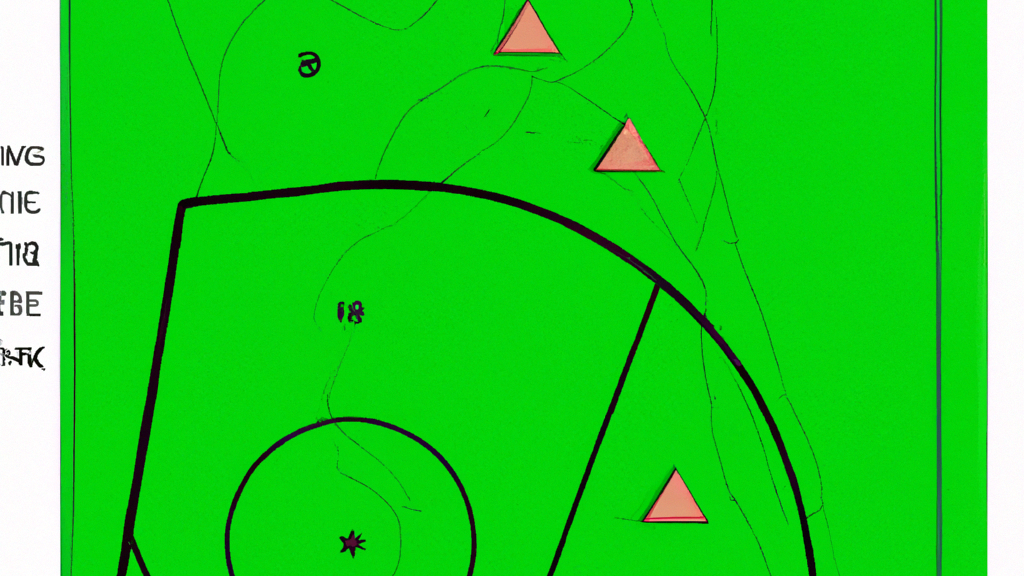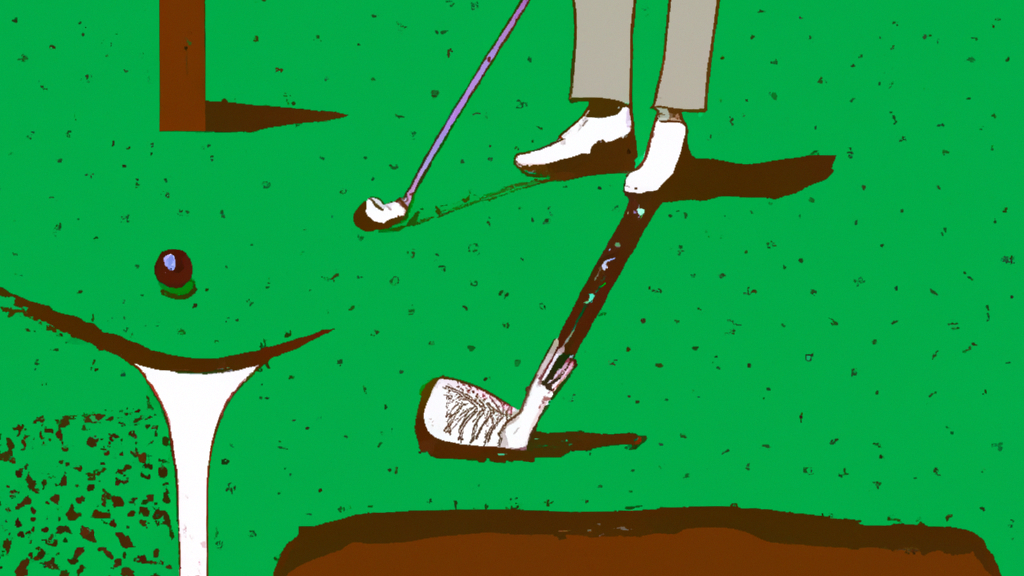GOLF COURSE MANAGEMENT: A GUIDE TO ROUGH MANAGEMENT
Golf course management is a crucial aspect of maintaining a beautiful and playable course. One of the most challenging areas to manage is the rough, which can greatly impact a golfer’s game. In this guide, we will explore the best practices for rough management, including mowing techniques, weed control, and fertilization. Whether you are a golf course superintendent, a member of a country club, or a professional golfer, understanding how to properly manage the rough can make a significant difference in the overall quality of the course.
By implementing these strategies, you can ensure that your course is not only aesthetically pleasing but also provides a fair and enjoyable playing experience for all golfers. So, let’s dive into the world of rough management and discover how to take your golf course to the next level.

Golf Course Rough Management Tips
Golf courses are a beautiful and serene place to spend your time. The lush green grass, the well-manicured fairways, and the pristine greens all contribute to the overall beauty of the course. However, there is one area of the course that is often overlooked but plays a crucial role in the overall appearance and playability of the course – the rough.
The rough is the area of the course that surrounds the fairways and greens. It is typically longer and thicker than the fairway grass and can be a challenge for golfers to play from.
Proper management of the rough is essential to ensure that the course remains playable and visually appealing.
Why is Rough Management Important?
Proper rough management is essential for several reasons. First and foremost, it affects the playability of the course. If the rough is too long or too thick, it can make it difficult for golfers to hit their shots and can lead to slower play. On the other hand, if the rough is too short or too thin, it can make the course too easy and take away from the challenge of the game.
In addition to affecting playability, rough management also plays a crucial role in the overall appearance of the course. A well-managed rough can enhance the beauty of the course and make it more visually appealing to golfers and visitors.
Tips for Proper Rough Management
- Determine the Ideal Height
- Mow Regularly
- Use the Right Equipment
- Water Appropriately
- Fertilize Regularly
- Control Weeds
- Consider the Design of the Course
The first step in proper rough management is to determine the ideal height for the rough. This will depend on several factors, including the type of grass, the climate, and the overall design of the course. In general, the rough should be longer and thicker than the fairways but not so long that it becomes unplayable.
Regular mowing is essential for maintaining the proper height of the rough. The frequency of mowing will depend on the growth rate of the grass and the desired height. In general, the rough should be mowed at least once a week during the growing season.
Using the right equipment is essential for proper rough management. A rotary mower is typically used for mowing the rough, but a flail mower may be necessary for thicker or taller grass. It is also important to ensure that the blades are sharp to prevent damage to the grass.
Proper watering is essential for maintaining healthy grass in the rough. The amount of water needed will depend on the climate and the type of grass. In general, the rough should be watered deeply but infrequently to encourage deep root growth.
Regular fertilization is essential for maintaining healthy grass in the rough. The type and amount of fertilizer needed will depend on the type of grass and the soil conditions. In general, the rough should be fertilized at least twice a year, once in the spring and once in the fall.
Weeds can quickly take over the rough if left unchecked. Regular weed control is essential for maintaining a healthy and visually appealing rough. This can be done through manual removal or the use of herbicides.
The design of the course should also be taken into consideration when managing the rough. For example, if the course has a lot of hazards, such as bunkers or water hazards, the rough may need to be longer and thicker to provide a challenge for golfers.
Conclusion
Proper rough management is essential for maintaining a playable and visually appealing golf course. By following these tips, you can ensure that the rough on your course is properly managed and enhances the overall beauty and playability of the course.
Remember to regularly mow, water, fertilize, and control weeds to keep the rough healthy and thriving. With proper management, the rough can be a beautiful and challenging part of the course that golfers will enjoy playing from.

- Golf Strategy: Tips to Improve your Mental Game – The Left Rough
The Amateur’s Guide to Breaking 80 on a Consistent Basis … Regardless of what level golf you are currently at, applying good solid course management to … - Golf Course Management & Strategy Tips – Golf Insider UK
Jan 12, 2022 … Now you have a strategy, let’s apply it to your course management. If you are serious about performing well, grab a stroke saver or online guide … - Turfgrass Fertilization: A Basic Guide for Professional Turfgrass …
Nov 10, 2016 … Jones, “Turf Analysis,” Golf Course Management, 48, no. 1 (1980): 29-32; H. Marschner, Mineral Nutrition of Higher Plants (New York: Academic … - Your Guide to Golf Course Maintenance Equipment | Lightspeed
Feb 18, 2021 … After all, pristine golf course conditions can go a long way in filling your tee sheet. … Fertilization and Pest-Management Equipment. - Course Management, Part I – Golf Tip
Unless the hole is exceptionally long, most pros will hit a shorter club than the driver to better avoid water, thick rough or other obstacles; How they play … - COLORADO GOLF INDUSTRY BEST MANAGEMENT PRACTICES …
practices; integrated pest management; pesticide … BMPs in order to guide golf courses in balanc- … greens, tees, fairway/rough to ensure that the. - Toro Golf Course Equipment | Mowers, Turf Equipment, Irrigation …
Stay on top of your golf course management with Toro’s golf mowers, turf equipment, cultivation and … Rough Mowers: Riding and Pull Behind Mowers. - A13 Golf Course Rough Grass & Habitat Areas
Guides and Advice. View our range of expert guides on advice covering all aspects of golf course maintenance and management. Landscape Architects. - ACSP for Golf – Audubon International
By implementing and documenting environmental management practices in the above areas, a golf course is eligible for designation as a Certified Audubon … - Turf Agronomic Programs | Greencast | Syngenta
Preparation is essential to effective turfgrass management. Turf agronomic programs can help turfgrass recover quicker from stress to enhance aesthetics and …
Stuff about Golf Course Management: A Guide to Rough Management you didn’t know
- The first recorded game of golf was played in Scotland in the 15th century.
- Golf balls were originally made out of wood until the 17th century when they began to be made out of leather and stuffed with feathers.
- The Masters Tournament, one of golf’s four major championships, has been held annually at Augusta National Golf Club since 1934.
- Professional golfer Tiger Woods has won a total of 82 PGA Tour events, tying him for the most all-time with Sam Snead.
- Country clubs originated in Scotland as places where wealthy landowners could gather to socialize and play games like golf and tennis.
- In addition to traditional stroke play tournaments, there are also match play tournaments where players compete against each other hole by hole rather than based on their overall score for the round.
- Many professional golfers use caddies who carry their clubs and provide advice on course strategy during tournaments.
- The Ryder Cup is a biennial team competition between Europe and the United States that dates back to 1927





